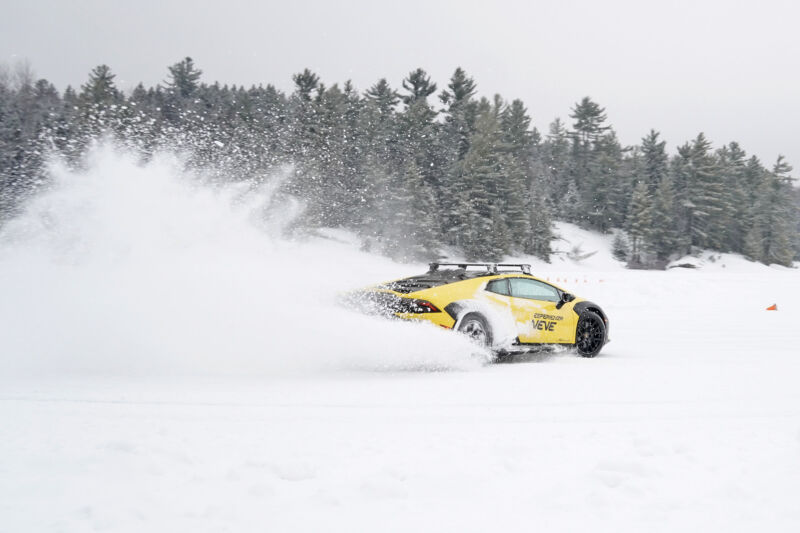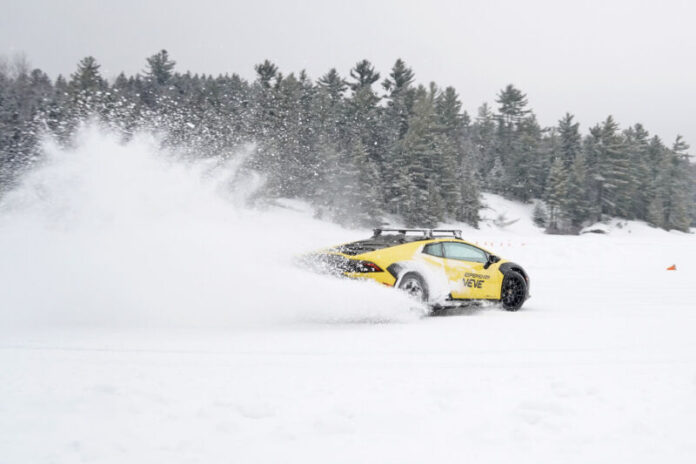
Enlarge / You can learn a lot about traction when there's very little of it around. (credit: Michael Teo Van Runkle)
From the passenger seat of my Lamborghini Huracán Sterrato, 24 Hours of Daytona winner Corey Lewis gives me a "slow down" hand gesture, urging me to avoid an Urus high-centered on a snow bank. I resist the childish impulse to blast by at full throttle and spray the recovery crew with a fresh layer of snow because I don't want to be the next driver to cause a scene. Once we pass the group, I punch it again, countersteering into a wide drift as my studded Blizzak winter tires shred through snow and ice, exhaust wide open and barking at redline, cranking through a series of left-right-left transitions until we come back around to the stuck SUV.
Lewis and I both laugh—everybody spins at least once while ice-drifting Lamborghinis on Lake Catchima north of Montreal, which played host in February to North America's Esperienza Neve winter driving academy. This year, Lamborghini invited customers out to tear up the pristine Canadian winterscape in three Sterratos, four Uruses, and two rear-wheel-drive Huracán Tecnicas—all told, about $3 million worth of cars.
Drifting in six-figure Lambos might make anyone a little nervous. In the controlled environment of a 30-inch (762 mm)-thick ice sheet, though, the consequences are minimal (there are bruised egos whenever anybody loses control and needs a tow, of course). So much power on the slip-and-slide immediately exposes driver skill—or lack thereof—despite 400 studs per tire on the Huracáns and 300 per tire on the Uruses providing grip and confidence. Even for a driver as experienced as Lewis, ice-drifting still has its value. For the mere mortals among us, all the more so.
Read 19 remaining paragraphs | Comments
Ars Technica - All contentContinue reading/original-link]




